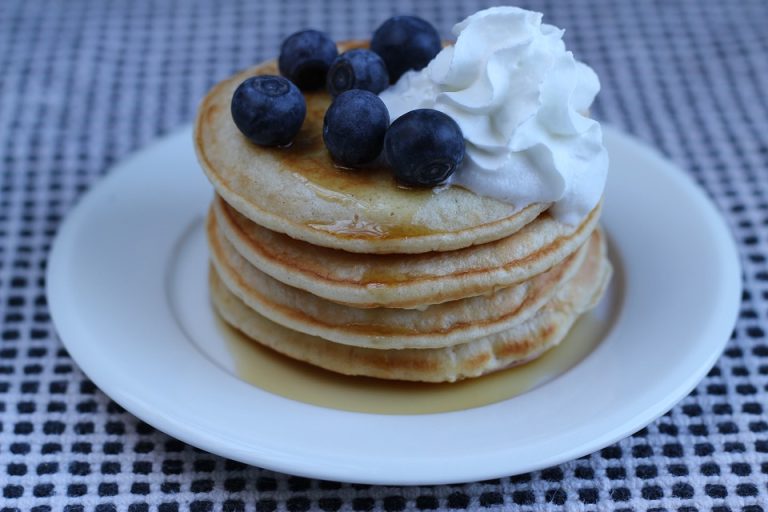
When it comes to breakfast, few things are as satisfying as a stack of homemade pancakes. Whether you prefer them plain, topped with fresh fruit or drizzled with syrup, pancakes are a beloved morning staple. However, if you’re looking to keep an eye on your caloric intake, it’s important to know just how many calories are in those delicious flapjacks.
The caloric content of homemade pancakes can vary depending on the recipe and the ingredients used. By analyzing the individual ingredients and their respective calorie counts, you can get a better sense of how many calories are in your homemade pancakes.
First and foremost, we need to look at the primary ingredients in pancake batter – flour, eggs, milk, and butter. One cup of all-purpose flour contains about 455 calories. Two large eggs contain approximately 140 calories, while one cup of whole milk contains around 150 calories. Lastly, a tablespoon of butter adds another 100 calories to the mix.
Using this information, we can calculate the approximate caloric content of a simple pancake recipe. For example, a batch of pancakes made with two cups of flour, two eggs, two cups of milk, and two tablespoons of butter would yield about 1,490 calories in total. This means that a serving size of three pancakes would be roughly 250-300 calories, depending on their size and thickness.
Of course, the caloric content of pancakes can vary greatly depending on additional ingredients and toppings. For example, adding sugar, chocolate chips, or nuts to the batter will increase the overall calorie count. Toppings like syrup, whipped cream, and butter will also add extra calories to the final dish.
If you’re looking to reduce the caloric content of your homemade pancakes, there are a few simple swaps you can make. For example, consider using whole wheat flour instead of all-purpose flour for a higher fiber content and lower calorie count. You can also use low-fat or skim milk instead of whole milk to reduce the fat content.
Additionally, consider using sugar-free or low-calorie syrup as a topping, or opting for fresh fruit instead of sugary toppings. These small changes can make a big difference in the overall caloric content of your pancakes without sacrificing flavor.
In conclusion, analyzing the caloric content of homemade pancakes can be a helpful tool for those looking to maintain a balanced diet. By understanding the calorie counts of individual ingredients and making mindful choices when it comes to toppings and additions, you can enjoy a delicious breakfast without overdoing it on the calories. So go ahead and whip up a batch of pancakes, but remember to keep an eye on portion sizes and make smart ingredient choices to keep your homemade breakfast treat within your caloric goals.